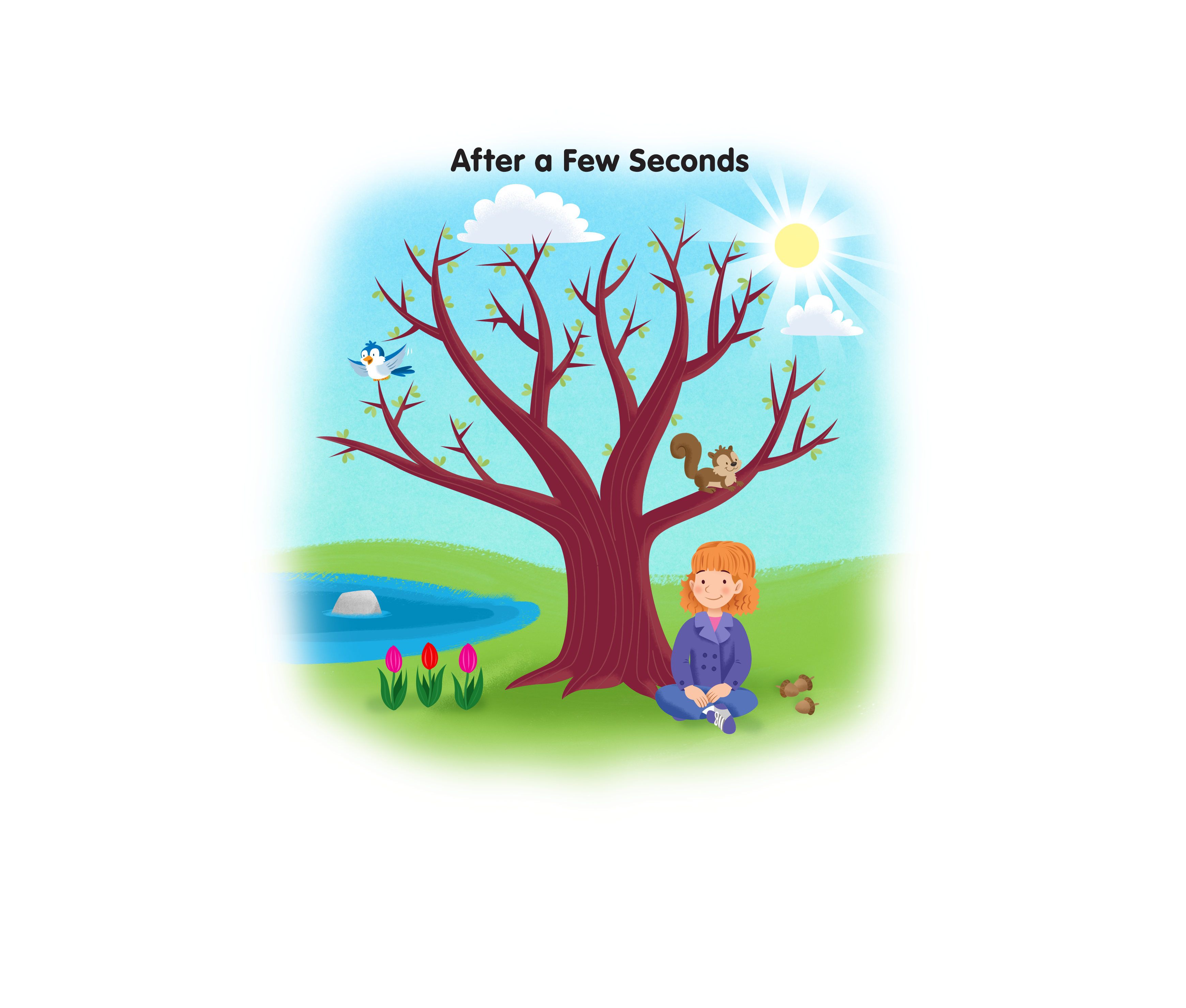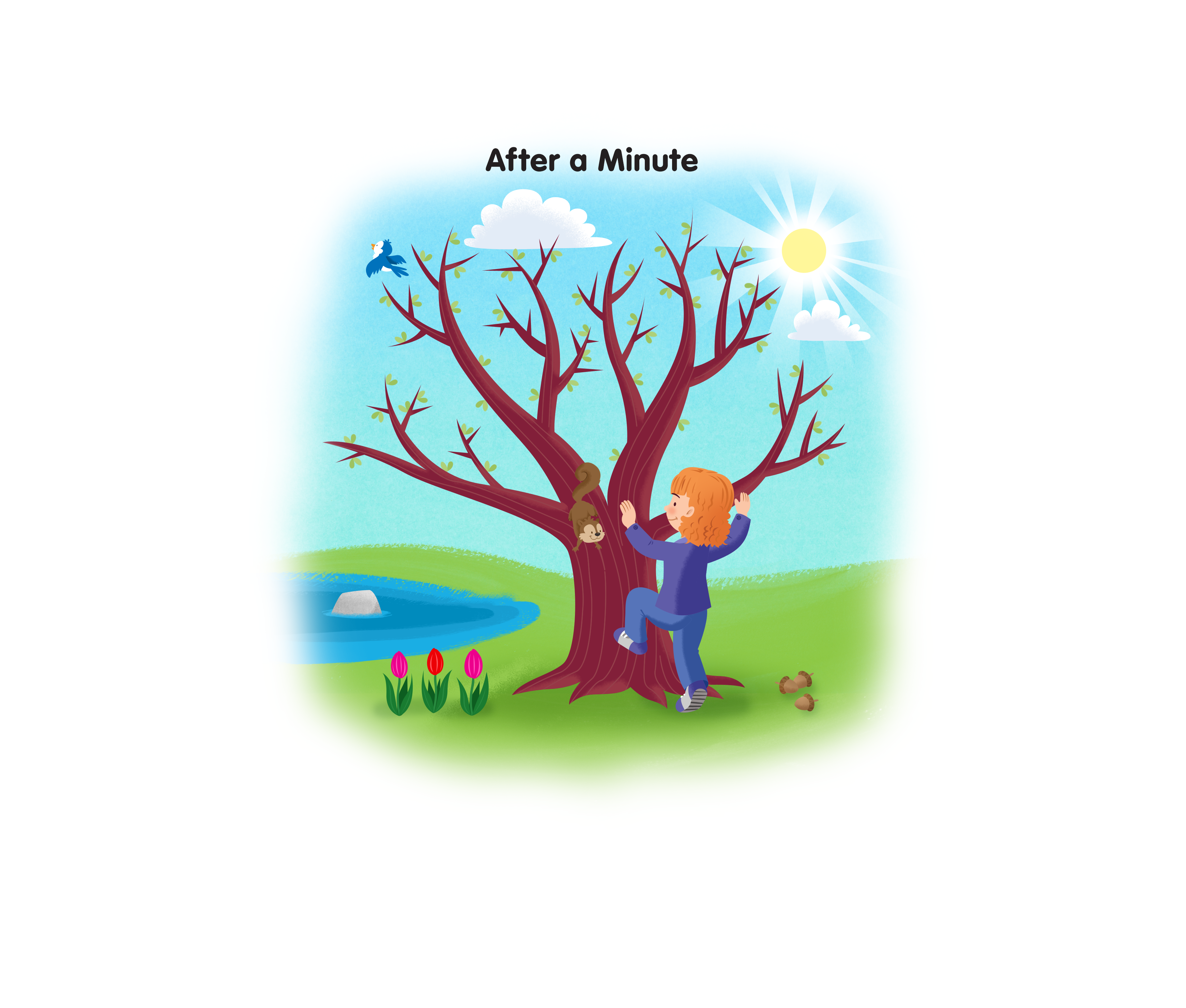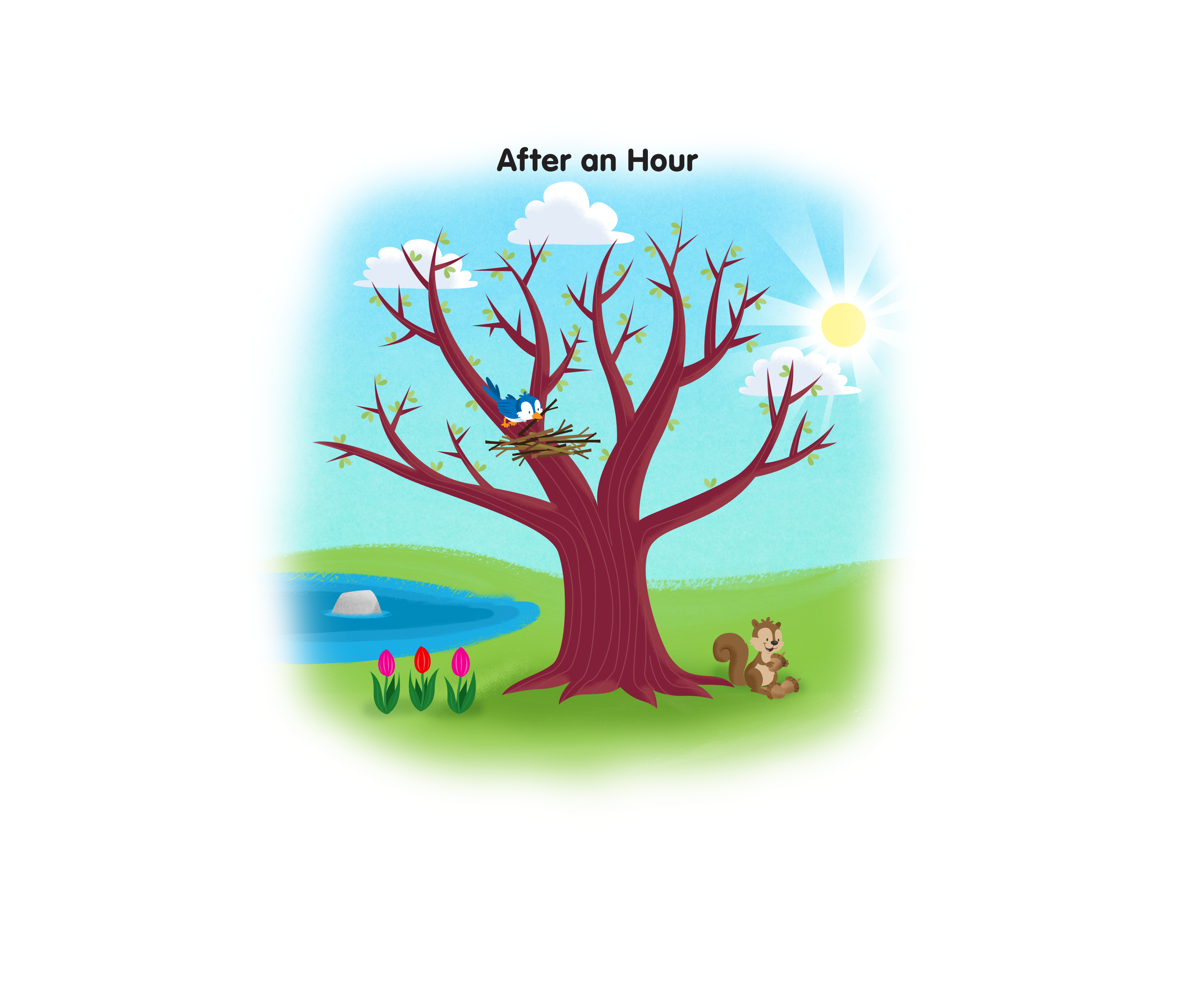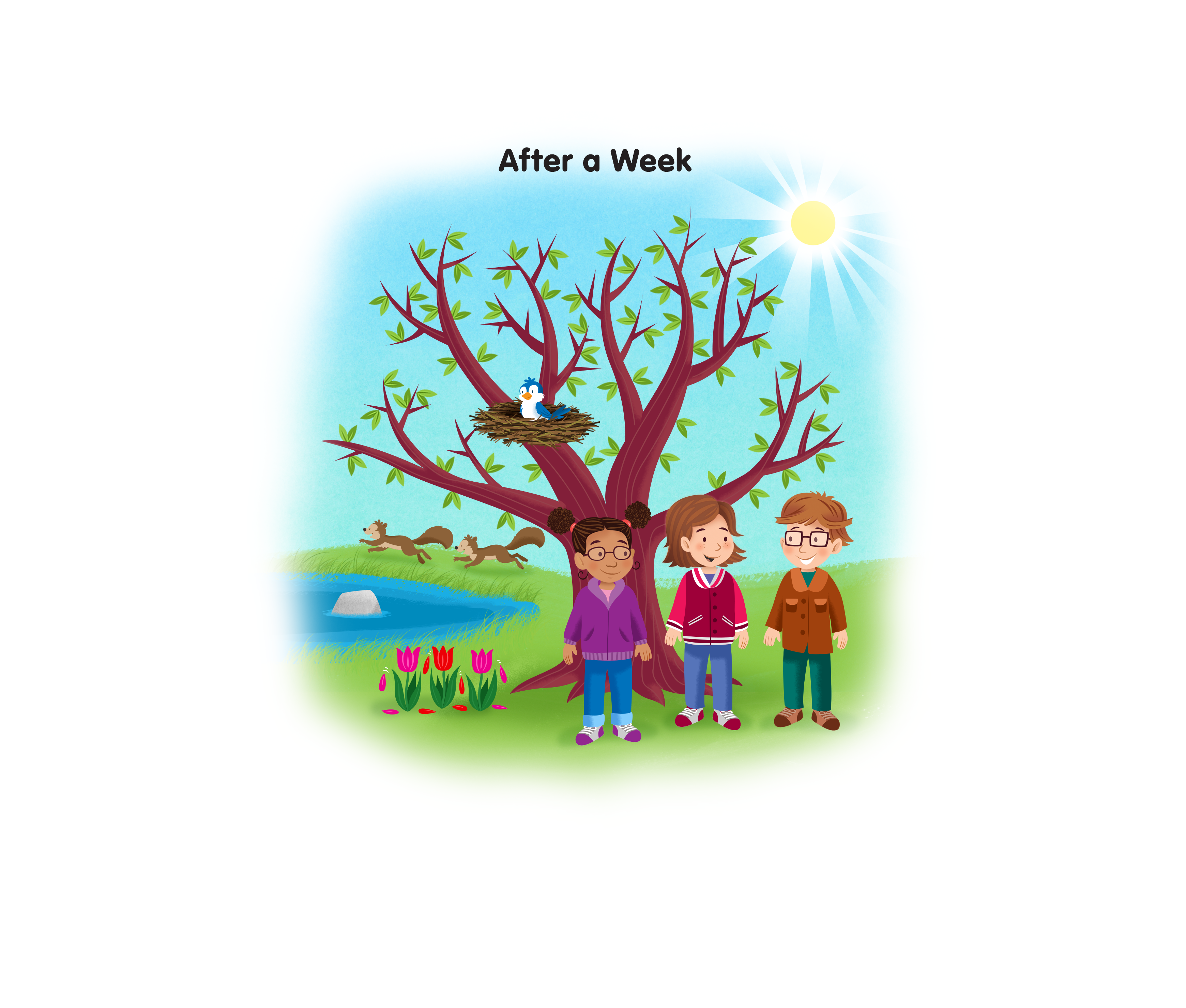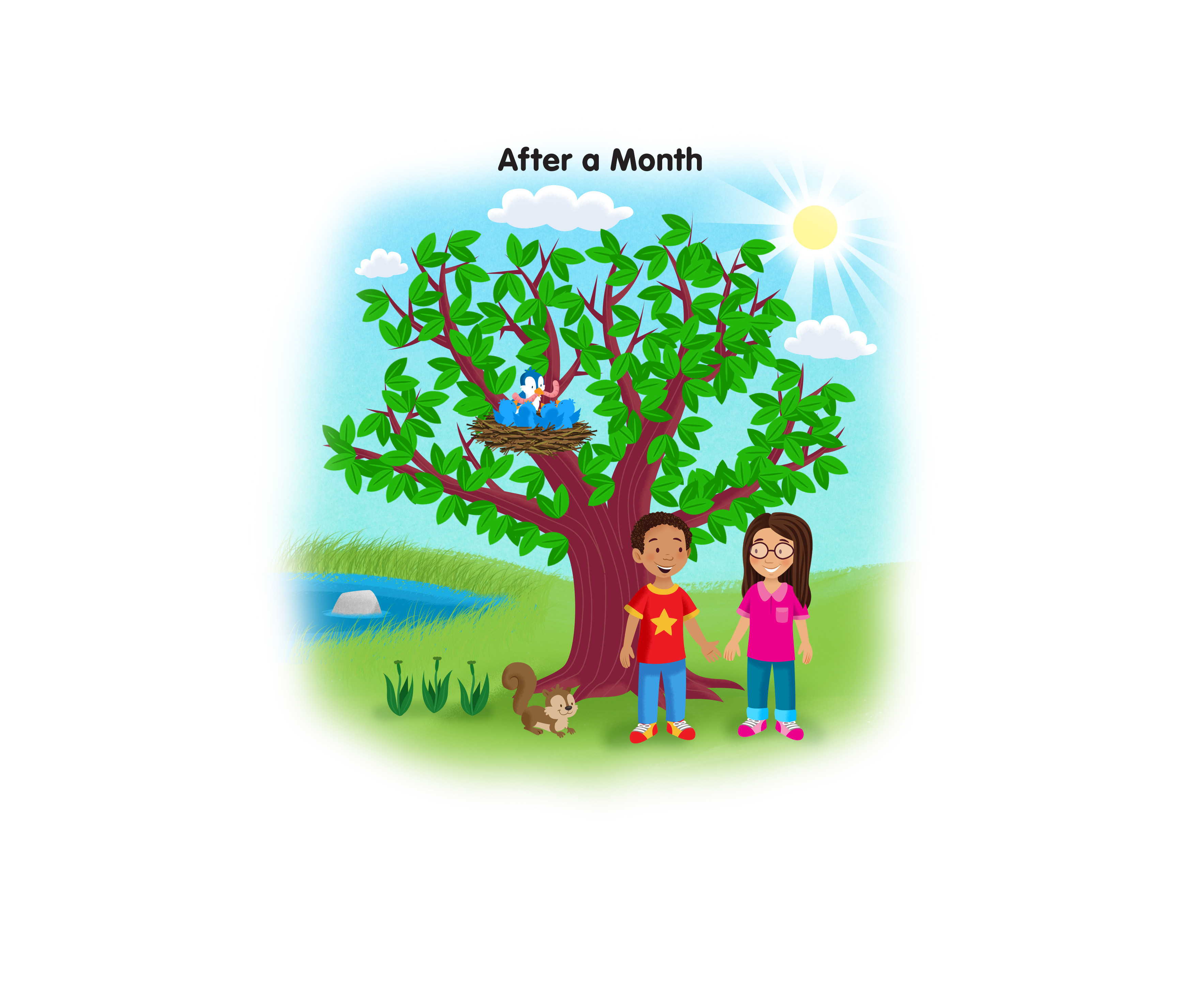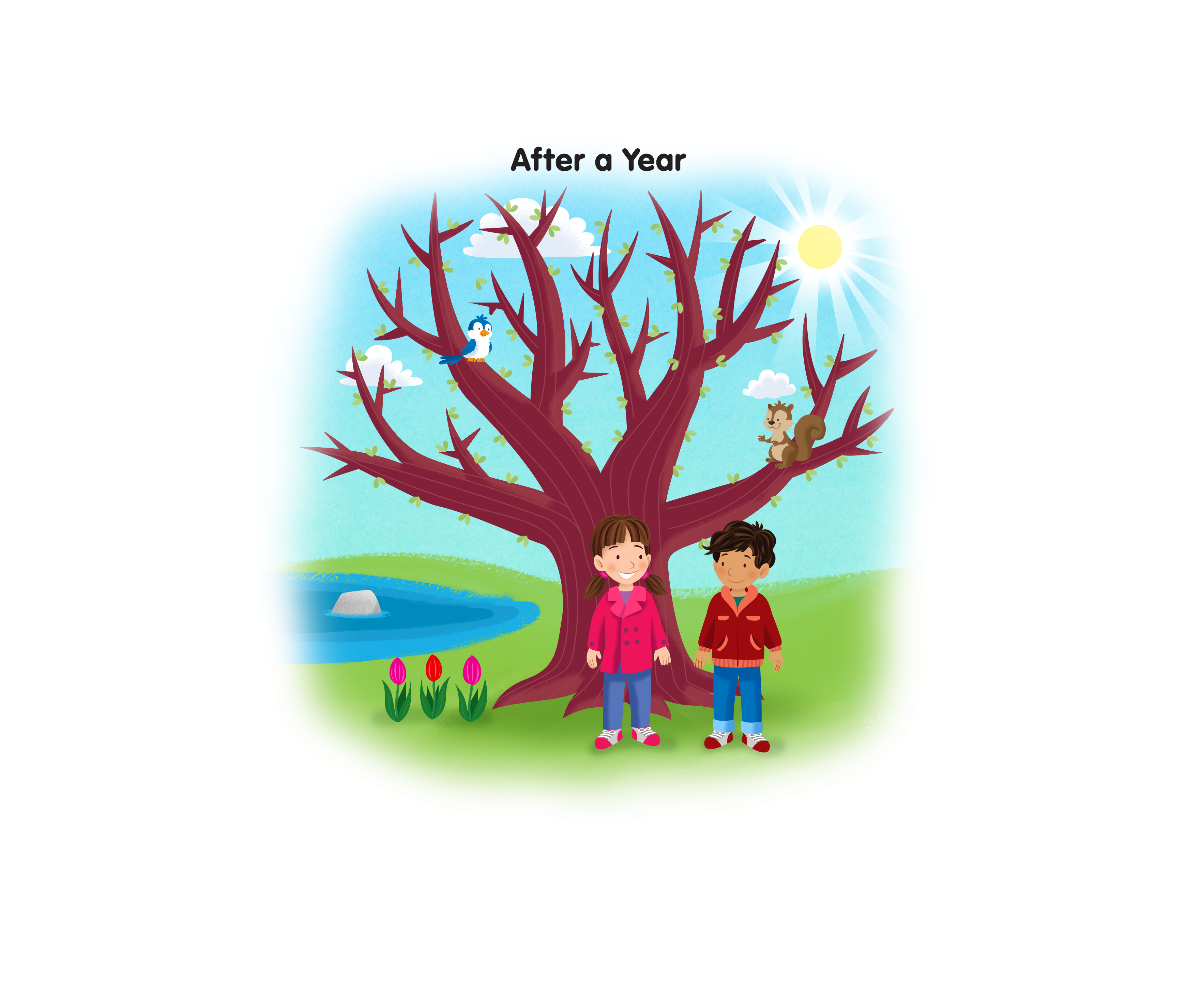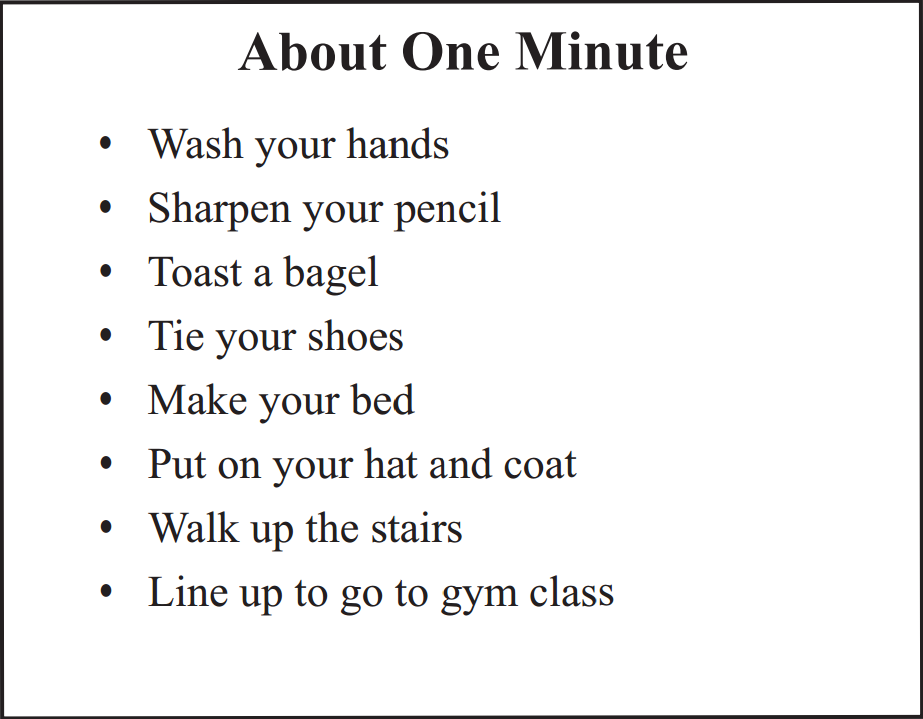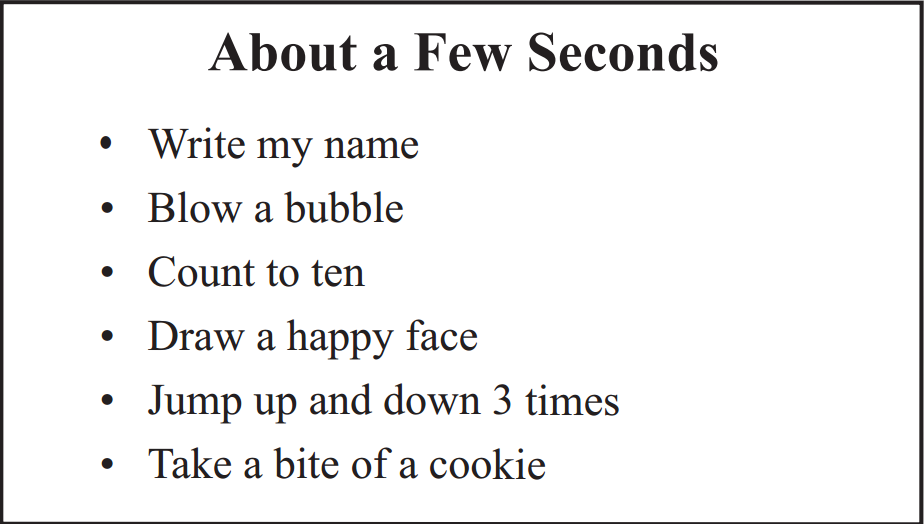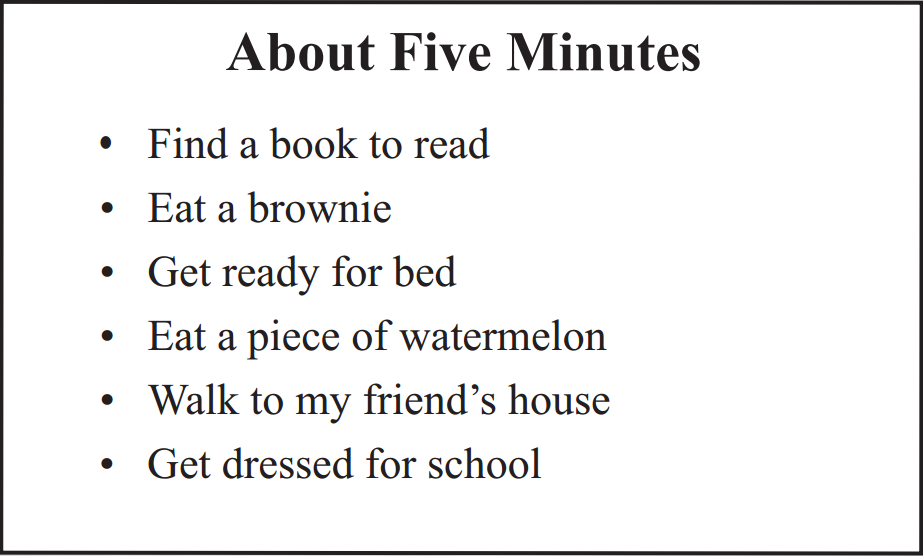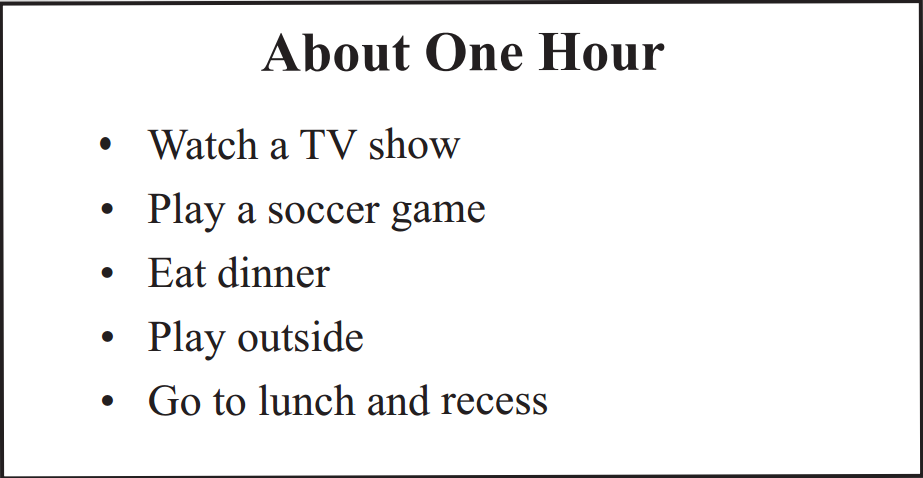How Long Does It Take
Est. Class Sessions: 2Developing the Lesson
Read a Book about the Passage of Time. Introduce this lesson using a book about the passage of time for different units of time: second, minute, hour, day, week, month, and year. Begin by showing students the front cover of the book to generate interest and familiarize students with the context of the book. If the suggested books are unavailable, another option is to use the display of the Tree 1–8 Master. See the Sample Dialog for the beginning of a discussion about the changes that take place during the time periods on the Tree 1–8 Master.
Ask:
As you read the book or show the display of the Tree 1–8 Master, ask questions to help students think about what can happen or the changes that can occur during each of the different units of time.
For example, ask:
After reading the book or showing the display of the Tree 1–8 Master, ask:
Play Seconds, Minutes, and Hours. Tell students that they are going to play a quiet game that will help them get the sense of how long a few seconds and a minute are. If you are using a stopwatch, show it to the students and explain how you will use it to measure time. Tell students that in this game you are going to ask them to move only the tops of their bodies and to pretend their feet are stuck to the floor. Explain you are going to tell them when to start and stop. When they are stopped, they need to stand very quietly and as still as a statue. Allow students an opportunity to quietly test out their moves before you start the game.
When you are ready, use a stopwatch or the second hand on a clock to measure 5 seconds while students move.
Ask:
Tell students that they are going to play again but this time you are going to change the length of time that you give them. This time you are going to ask students to move for one minute.
After you time them moving for one
minute, ask:
Play this game several more times alternating between
5 seconds and one minute.
After each round ask:
After you finish playing the game, direct students' attention to the "About One Minute" chart you prepared and ask them to think of activities that last about a minute. List these activities on the chart. See Figure 1 for a list of possible activities that can be done in about one minute.
As students contribute each activity, remind them that while some people might take a little longer than a minute and some might take less than a minute to complete each activity, they are all activities that can be done in about one minute.
Refer students to the "About a Few Seconds" chart you prepared and ask them to think of activities that take a few seconds. List these activities on the chart. See Figure 2. Remind students that in the game they just played you sometimes told them to stop moving after a few seconds had elapsed.
Explain that the word few does not refer to a specific number but to a small amount of the total. For example, in the game, each time students moved for a few seconds, 5 seconds was measured on the stopwatch. So in this game, a few seconds is equal to 5 seconds.
Refer students to the "About Five Minutes" and "About One Hour" charts you prepared.
Use these or similar discussion prompts to introduce the charts:
After all four charts have been completed, display them in an area of the room and invite students to add to each chart as they think of new activities.
















